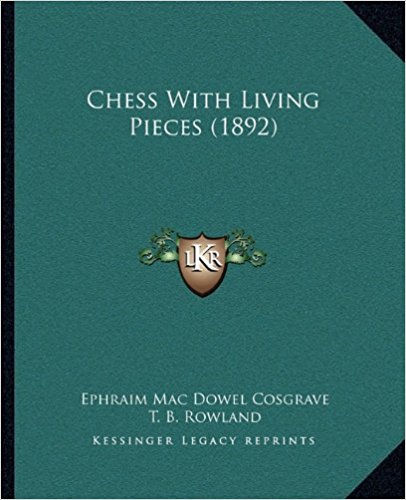Living chess, or human chess, involves human beings taken the part of chess pieces and moving around on a giant board. The earliest examples can be traced back to the 15th century. Most commonly such games are intended as a spectacle or pageant and a rehearsed game is “played”, to avoid the problem of a long and/or boring game which would not be enjoyable for the spectators (and probably for the people being used as the pieces!)
In 1891 a Club of Living Chess was formed in Dublin, Ireland with the purpose of giving living chess displays for suitable charities. In 1892 one of the members, Dr Ephraim McDowell Cosgrave wrote what is probably the only book devoted specifically to living chess, “Chess With Living Pieces”.

While most living chess games are “one-off” demonstrations, Marostica in northern Italy is famous for its biennial living chess game, which has been held since 1954. The game is performed in honour of a game played in 1454 for the hand of a lady. The moves of the 1454 game are repeated each year, and the event has become a major tourist attraction for the town. One of the restaurants in Marostica is called “alla Schacchiera” (at the chessboard).
David Hooper and Kenneth Whyld, “The Oxford Companion to Chess”, Oxford University Press, Oxford, 1992 pp, 230 & 249 was used as the basis for this blog post.